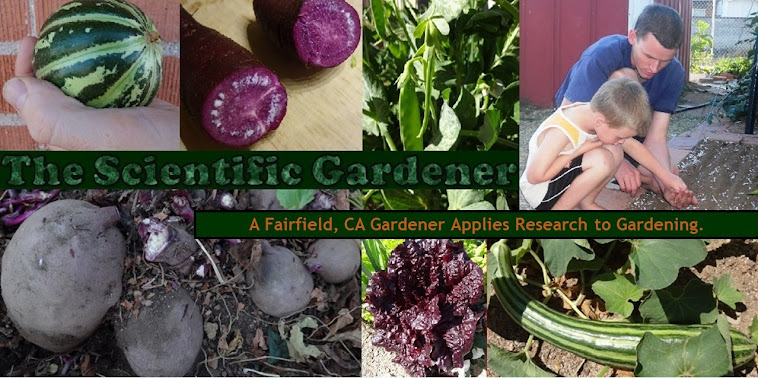 |
| Tepary Bean Plants are native to the Southwest. |
Because I am still experimenting and learning about many of the vegetable varieties that are out there I want to keep the seed of each variety I grow, without having them cross-pollinate with other varieties. In order to do this, I must isolate each cultivar (or specific vegetable variety) from others in the same family. For example: I do not want to grow a red lettuce that tasted wonderful next to a green lettuce that tasted awful and have them cross-pollinate to create something in-between. I might get a good tasting green lettuce or I could end up with a bad tasting purple lettuce. Either way, I have no intention to devote my efforts to breeding lettuce until I know what type of lettuce grows best in my climate and what type of lettuce my family enjoys eating the most.
A gardener can isolate his plants in many different ways. My least favorite method of isolation is using distance to keep one variety from another. If I wanted to keep seed of two different types of corn I would have to separate them by at least a mile to keep them from cross-pollinating. I do not have miles of garden to work with (though I wish I did) so instead I try to isolate my plants by only growing one variety of each plant family per season. I do have some exceptions to growing more than one family of plants in separate seasons.
 |
| Purple Podded Pinkeye - No pods yet. |
Two of the exceptions I have to growing multiple plants in the same family include if I’m trialing the plant and I don’t need to keep seed or if I’m dealing with a family of plants that rarely cross-pollinate (i.e. tomatoes). Another exception involves how I pollinate my peppers. I hand pollinate them with a paintbrush early in the season when I see very few pollinators. Then I only save seed from the earlier peppers, being mindful to clearly label each variety to keep them separated.
To isolate my beans I have chosen to grow different species of bean rather than isolate them in any other manner. I am currently growing three different kinds of beans – Southern peas, purple hyacinth beans, and tepary beans. The southern pea variety (cultivar: Purple Podded Pinkeye) is from the family Vigna unguiculata, while the purple hyacinth bean is from the Dolichos lablab family, and finally my Tepary beans (unknown cultivar borrowed from the library) is from the Phaseolus acutifolius family.
 |
| Bushy Tepary Beans - I take pictures at night because of the daytime heat |
I knew that my southern peas were bush beans and my Hyacinth beans were vine beans and I thought that my Tepary beans were probably a vining variety too. However, as you can see, my Tepary beans are currently more bushy than vining. As far as I know, all three of these bean families have a vining and a bush equivalent - meaning that you can either grow them up a trellis or you can keep them low near the ground, depending upon your gardening needs.
Growing different families of beans enables me to notice the positive and negative features of each family of beans. For example, the southern peas (Vigna unguiculata) often attract ants to take part in a mutalisitic relationship. The beans produce nectar sources near the flower pods, called extrafloral nectaries. As payment, the ants act as a beneficial insect on the beans, keeping off any bug that might consider the bean as a meal. One drawback to this is that every time I harvest these kind of beans that I’ll be sure to harvest some ants with the beans.
 |
| Purple Hyacinth beans named after their purple pods - none here yet. |
What I know about Tepary beans is that they are incredibly drought and heat resistant while Purple Hyacinth beans produce flowers which really attract pollinators. And pollinators are exactly what I need for some of my vegetables pollinate - as long as they are the same variety. There are so many bean varieties that, if you do have a lot of pollinators in your area, you may find it advantageous to grow different families to keep your favorite varieties pure.
